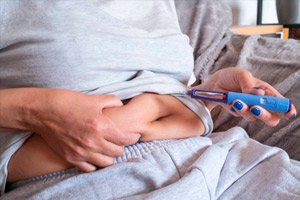
All iLive content is medically reviewed or fact checked to ensure as much factual accuracy as possible.
We have strict sourcing guidelines and only link to reputable media sites, academic research institutions and, whenever possible, medically peer reviewed studies. Note that the numbers in parentheses ([1], [2], etc.) are clickable links to these studies.
If you feel that any of our content is inaccurate, out-of-date, or otherwise questionable, please select it and press Ctrl + Enter.
Diet and physical activity are necessary for safe weight loss on GLP-1 drugs
Last reviewed: 03.08.2025

Researchers at the Harvard T. H. Chan School of Public Health are calling for combining GLP-1 receptor agonist weight loss drugs with individually tailored diet and exercise. They say this approach is the only way to minimize side effects, preserve muscle mass, and avoid nutritional deficiencies.
GLP-1 drugs—including Wegovy, Ozempic, Rybelsus, Mounjaro, Victoza, and Trulicity—are rapidly gaining popularity due to their ability to cause significant weight loss without the need for lifestyle changes. However, their decreased appetite and slower gastric emptying raise concerns about protein, micronutrient, and fluid deficiencies. In addition, muscle loss—25% to 40% of total weight lost—is common with all weight-loss programs.
In a recent paper published in JAMA Internal Medicine, titled “Integrating Diet and Physical Activity in GLP-1 Prescribing: Lifestyle Remains Crucial,” researchers summarized recommendations for maintaining health while on GLP-1 therapy.
Key recommendations:
Weight monitoring: monthly during dose titration, then quarterly. If weight loss is insufficient (less than 5% over 12–16 weeks), dosage adjustment or drug change is recommended.
Evaluation of excessive weight loss: If BMI
Nutritional support: Consultation with a dietitian every 2–3 months. If not available, the REAP-S questionnaire can be used.
Nutritional targets:
– Protein: 60–75 g/day (1.0–1.5 g/kg), more for older adults and those who have had bariatric surgery
– Calories: 1,200–1,500 kcal/day for women, 1,500–1,800 kcal/day for men
– Water: >2–3 L/dayMicronutrients: deficiencies of vitamin D (>50%), folate (up to 54%) and iron (up to 45%) are common.
Physical activity:
– Gradual introduction of movement
– Strength training: 60–90 min/week
– Aerobic exercise: 30–60 min/day + 2–3 strength sessions per week
Strength training in a calorie deficit can reduce muscle loss by up to 95%.Functional assessment: Grip strength and six-minute walk tests are recommended to monitor muscle condition.
After drug withdrawal: 7-12% of body weight may return within a year after completion of therapy. If more than 5% of body weight is regained, supportive measures should be considered. Standardized protocols do not yet exist.
The authors emphasize that the success of GLP-1 therapy is impossible without parallel correction of nutrition and physical activity: this reduces risks and helps maintain health in the long term.
